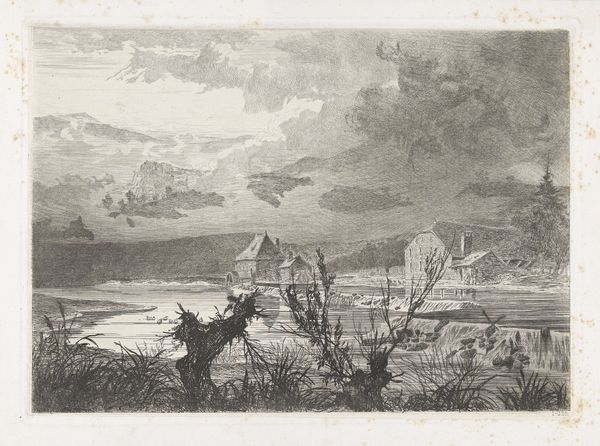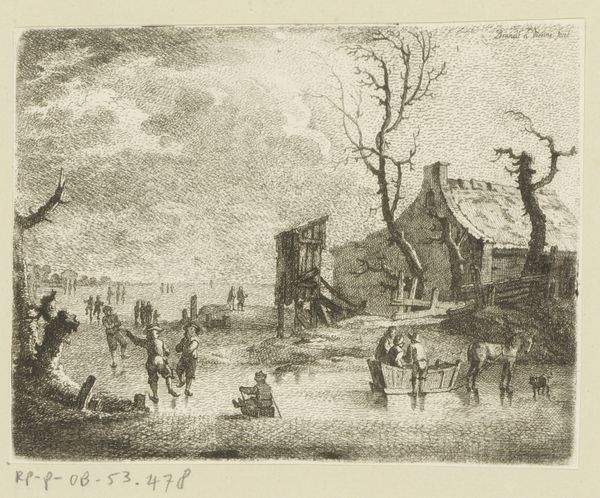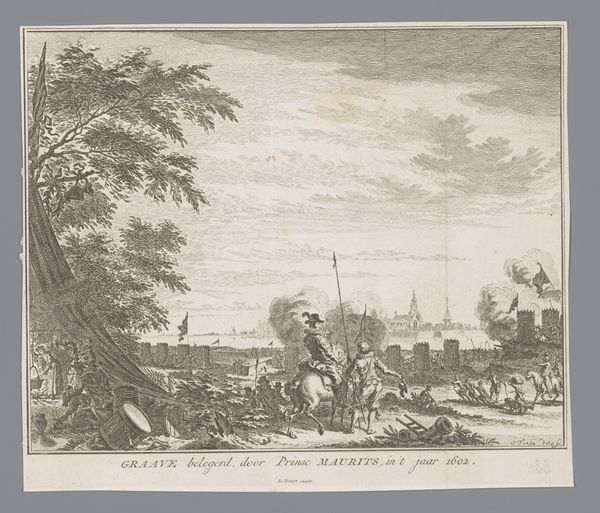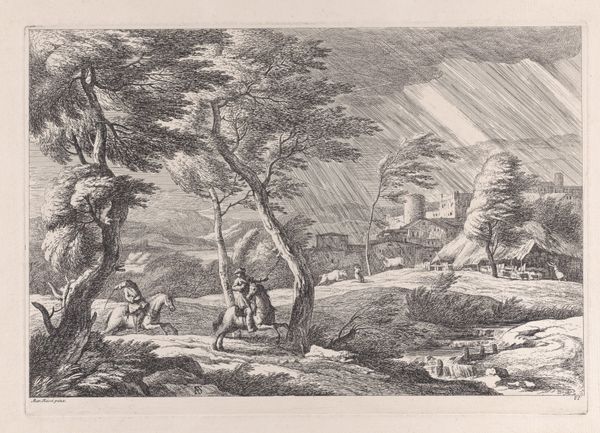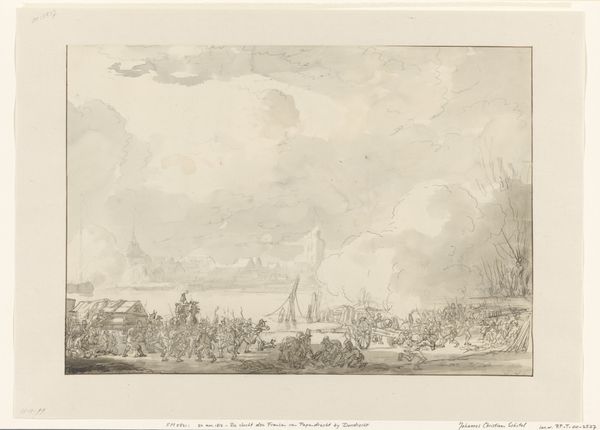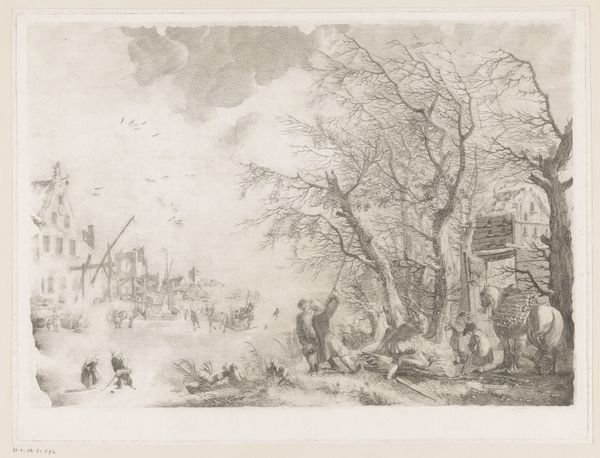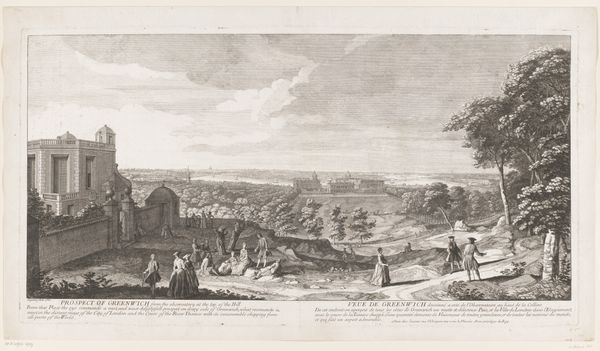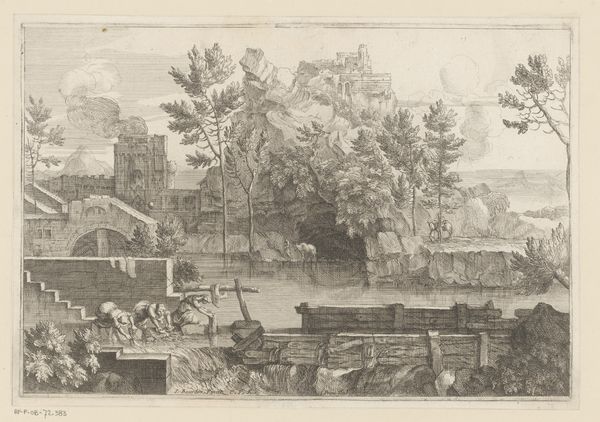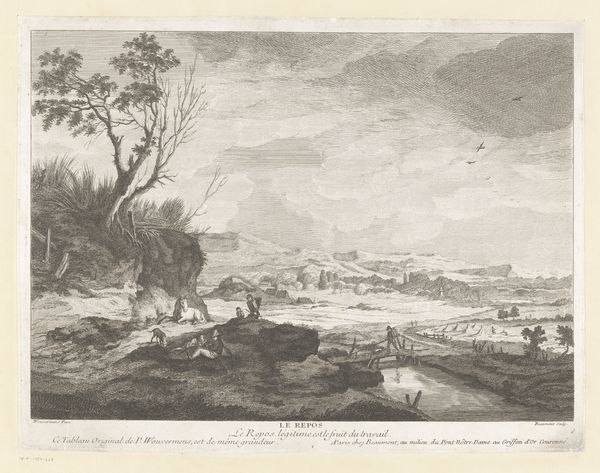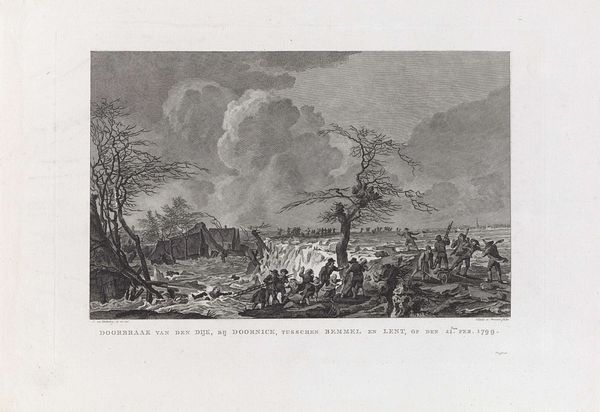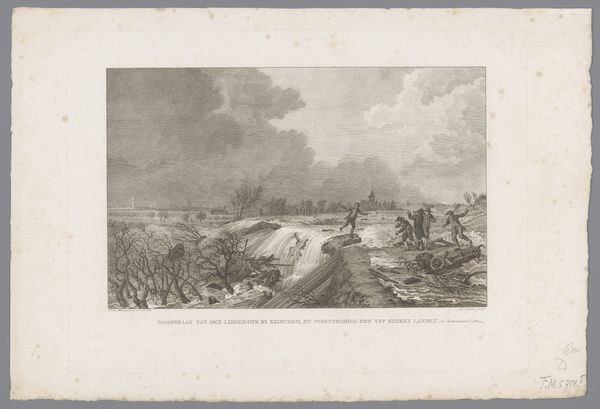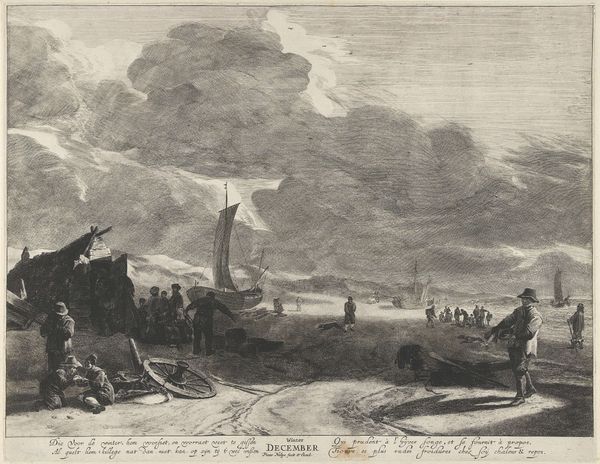
print, engraving
#
baroque
# print
#
landscape
#
cityscape
#
history-painting
#
engraving
Dimensions: height 161 mm, width 192 mm
Copyright: Rijks Museum: Open Domain
Curator: Looking at this detailed engraving by Simon Fokke, created around 1752, titled "Turfschip van Breda, 1590," I'm immediately struck by its dynamic energy despite the relatively limited tonal range of the print. Editor: It feels so staged and purposeful. I can feel the weight of a very male-dominated power play from an era characterized by religious conflicts. Curator: Indeed. The image commemorates a historical event: the capture of Breda Castle in 1590. The 'turfschip' refers to a boat disguised as a peat barge. Editor: Yes, the symbolism there is layered isn’t it? Peat itself is this dark, earthy fuel—literally feeding a community but visually heavy and concealed, which perfectly mirrors the clandestine operation and speaks to broader concepts of land, resources, and dominion in the Dutch consciousness at the time. The castle looming in the background feels less powerful and slightly naive with that towering flag pole in front of it. Curator: I completely agree. Focusing on how that very public show of power of the flag distracts from what is really occurring in the image, what’s most impactful for me, however, is the socio-political undertones. How the subjugation of the city becomes synonymous with ideas around ethnic and religious dominance—it tells us volumes about the prevailing culture back then and allows us to dissect our contemporary social constructs surrounding class and race. The composition cleverly juxtaposes clandestine maneuver and a full blown declaration. Editor: Precisely. And while seemingly a historical depiction of military strategy, it speaks to the wider themes of trickery and concealment across time, even tapping into the symbolic value of boats. I wonder how viewers at the time perceived such a powerful moment visualized. Curator: An astute point. It really prompts me to consider how artists then, as now, subtly but purposefully encode their sociopolitical views in seemingly neutral depictions of commonplace things and scenes, and these become part of our cultural visual library. Editor: It leaves you considering so much, from our reliance on cultural symbols and strategies to how deeply entrenched cultural values actually affect us.
Comments
No comments
Be the first to comment and join the conversation on the ultimate creative platform.
